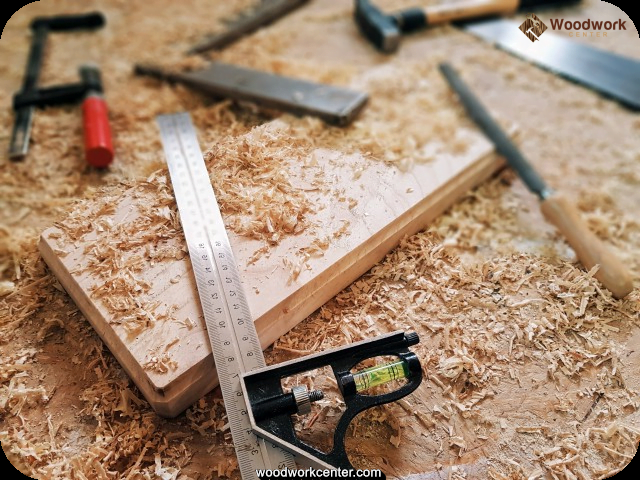Are you looking to add a personal touch to your bedroom furniture? Look no further than woodworking plans for nightstands. Nightstands are essential pieces of furniture in any bedroom, providing a convenient place to store small items and display bedside lamps or decorations. Building your own nightstand with woodworking plans allows you to customize the design and size to fit your specific needs and preferences.
When it comes to building your own nightstand, one of the first things to consider is the type of wood you will use. Different types of wood have unique characteristics that can affect the overall look and durability of the finished piece. From oak to pine, understanding the qualities of each type of wood can help you make an informed decision for your project.
In addition to choosing the right wood, having the necessary tools and materials is crucial for successfully completing your nightstand project. Whether it’s saws, sanders, or screws, creating a comprehensive list will ensure that you have everything needed before getting started. With detailed instructions and illustrations provided in woodworking plans, building a nightstand from start to finish can be an achievable and rewarding DIY project for enthusiasts of all skill levels.
Choosing the Right Wood
When it comes to building a nightstand using woodworking plans, choosing the right type of wood is crucial for the durability, aesthetics, and overall quality of the finished product. Different types of wood offer unique characteristics that can complement various bedroom styles and personal preferences. Understanding the features and benefits of each type of wood will help you make an informed decision when selecting the material for your nightstand.
Types of Wood
There are several types of wood that are commonly used for crafting nightstands. Oak is a popular choice known for its strength and durability, making it a suitable option for furniture that is likely to endure daily use.
Cherry wood is prized for its rich, warm tones and elegant grain patterns, adding a touch of sophistication to any bedroom. Maple wood is another versatile option, offering a smooth and consistent texture that can be stained in various shades to match different decor themes.
Characteristics and Considerations
Each type of wood has its own unique characteristics that can impact the appearance and performance of your nightstand. For example, oak is known for its prominent grain patterns and natural resistance to moisture, making it an ideal choice for a classic or rustic-style nightstand.
On the other hand, cherry wood develops a beautiful patina over time, enhancing its visual appeal with age. When considering which type of wood to use for your nightstand, it’s important to take into account factors such as cost, availability, hardness, stability, and ease of workability based on your woodworking skills.
Sustainability and Eco-Friendly Options
In addition to considering the physical properties of different types of wood, it’s also important to think about sustainability and eco-friendliness when choosing material for your nightstand. Some environmentally conscious options include reclaimed or salvaged wood from old furniture or buildings, as well as eco-certified woods such as FSC-certified lumber that are harvested from responsibly managed forests.
By opting for sustainable materials, you can build a nightstand with minimal environmental impact while still enjoying the beauty and functionality of real wood furniture.
Tools and Materials Needed
When it comes to building your own nightstand using woodworking plans, it’s important to have the right tools and materials on hand. Having a comprehensive list of what you need will ensure that the construction process goes smoothly and efficiently. Before starting your project, it’s essential to gather all necessary tools and materials to avoid any disruptions once you begin.
For building a nightstand, you’ll need basic woodworking tools such as a saw, hammer, measuring tape, chisel, drill, and screwdriver. In addition to these fundamental tools, specific materials are required for constructing a nightstand. These may include lumber for the frame and shelves, screws or nails for assembly, wood glue for added stability, and drawer slides if your nightstand design includes drawers.
It’s also crucial to consider the type of wood you’ll be using for your nightstand. Different types of wood offer varying levels of durability, appearance, and workability. Popular choices for nightstands include oak, cherry, maple, and pine.
Each type of wood has its own unique characteristics that can impact the overall look and feel of the finished piece. By choosing the right wood for your project, you can ensure that your nightstand will not only be functional but also aesthetically pleasing in your bedroom space.
Step-by-Step Woodworking Plans
Building a nightstand from scratch can be a rewarding and fulfilling project for any woodworking enthusiast. With the right woodworking plans for nightstands, you can create a beautiful piece of furniture that fits perfectly with your bedroom decor. In this section, we will provide detailed instructions and illustrations for building a nightstand from start to finish.
Before you begin your project, it’s important to have all the necessary tools and materials on hand. Some essential tools for building a nightstand include a saw, drill, sander, clamps, and measuring tape. As for materials, you’ll need wood boards, screws, wood glue, and finishing supplies such as stain or paint. Once you have gathered everything you need, you can move on to the next step.
The first step in building a nightstand is to cut the wood according to the dimensions specified in the woodworking plans. This will involve cutting pieces for the top, sides, shelves, and legs of the nightstand.
Once you have all the pieces cut to size, you can begin assembling them using the appropriate joinery techniques such as dowels or pocket hole screws. The woodworking plans will provide detailed instructions on each assembly step along with helpful illustrations to guide you through the process.
| Tools Needed | Materials Needed |
|---|---|
| saw | wood boards |
| drill | screws |
| sander | wood glue |
| clamps | finishing supplies (stain or paint) |
Customization Options
When it comes to building your own nightstand using woodworking plans, one of the most exciting aspects is the ability to customize the design to fit your personal style and preferences. Here are some options for customization:
- Size and Dimensions: One of the first things to consider when customizing your nightstand is the size and dimensions. Depending on the space available in your bedroom, you may want to adjust the height, width, and depth of the nightstand to fit perfectly next to your bed.
- Drawer Configuration: If you prefer a nightstand with drawers, you can customize the number and layout of drawers to suit your storage needs. Whether you want a single large drawer or multiple smaller drawers, woodworking plans can be adjusted accordingly.
- Hardware and Accents: The choice of hardware such as knobs or handles can significantly impact the overall look of your nightstand. Consider different styles and materials that complement your bedroom decor. Additionally, adding accents such as trim or molding can give your nightstand a unique and personalized touch.
In addition to these options, there are endless opportunities for customization when it comes to the overall design of the nightstand. From traditional styles with clean lines to more intricate designs with carvings and details, woodworking plans can be tailored to reflect your individual taste.
Whether you prefer a rustic farmhouse look or a modern minimalist design, having the flexibility to customize your nightstand allows you to create a piece of furniture that truly reflects your personality and enhances the aesthetic of your bedroom. With detailed woodworking plans for nightstands, you can bring your vision to life through careful planning and execution.
Finishing and Staining
Building your own nightstand with woodworking plans allows for customization not only in design but also in the finishing and staining process. Whether you prefer a natural wood look, a painted finish, or a stained appearance, there are various techniques and tips to achieve a professional result.
One of the first decisions to make when finishing your nightstand is whether to use a clear finish to showcase the natural beauty of the wood or to add color through paint or stain. If you opt for a clear finish, consider using polyurethane for its durability and resistance to moisture and chemicals. For those who want to add color, using wood stain allows the wood grain to show through while paint provides an opaque finish.
Before applying any finish, it’s crucial to properly prepare the surface by sanding it smooth and removing any dust. Additionally, be sure to work in a well-ventilated area and wear protective gear such as goggles and gloves when handling finishing products. Once the preparation is complete, follow the instructions on the product label for application technique and drying times.
Finally, if you’re looking for inspiration or guidance on finishing techniques for your nightstand, there are countless online resources and tutorials available. Many woodworking websites offer detailed articles, videos, and forums where experienced woodworkers share their tips and tricks for achieving a professional look. By taking advantage of these resources, you can confidently finish and stain your nightstand with exceptional results.
| Finishing Technique | Tips |
|---|---|
| Using Polyurethane for Clear Finish | Ensure proper ventilation when applying polyurethane |
| Wood Stain Application | Test the stain on a small inconspicuous area before applying it to the entire nightstand |
| Online Resources | Seek out woodworking websites for detailed tutorials on finishing techniques |
Tips for Beginners
For beginners in woodworking, building a nightstand can be a challenging yet rewarding project. It’s important to start with the right mindset and a willingness to learn new skills. With the right guidance and tips, even novices can successfully create their own custom nightstands using woodworking plans for nightstands.
Understanding the Basics
Before diving into your first woodworking project, it’s essential to understand the basics of working with wood and using different tools. Take the time to research and familiarize yourself with terms like grain direction, types of joints, and safety precautions when working with power tools. Understanding these fundamentals will set you up for success and prevent common mistakes that beginners often encounter.
Start With Simple Designs
When just starting out in woodworking, it’s best to begin with simple designs for your nightstand. Opting for straightforward construction techniques and minimal intricate details will make the build more manageable for beginners. As your skills progress, you can gradually take on more complex designs and techniques. Additionally, practicing on simpler designs will give you a better understanding of how different woods behave and how various tools work before taking on more elaborate projects.
Utilize Online Resources
There are numerous online resources available for beginners in woodworking, including websites, forums, and video tutorials that provide valuable information, tips, and guidance. Many of these resources also offer free or affordable woodworking plans for nightstands. Taking advantage of these materials can help boost your confidence as a beginner woodworker and expand your knowledge base as you embark on building your own unique nightstand.
By addressing common challenges and providing helpful tips tailored specifically for beginners in woodworking, individuals can gain the confidence they need to successfully complete their first nighttime project using woodworking plans for nightstands. With patience, practice, and dedication to honing their skills, even novices can produce high-quality custom furniture pieces for their homes.
Resources and References
When it comes to finding the right woodworking plans for nightstands, there are a plethora of resources and references available to help you with your project. Whether you are a beginner or an experienced woodworker, having access to additional resources and websites can greatly enhance your skills and knowledge in this craft.
One excellent resource for woodworking plans is online woodworking communities and forums. These platforms provide a space for woodworkers to share their expertise, offer advice, and exchange ideas on various projects, including nightstands. You can also find valuable feedback and recommendations from fellow woodworkers who have already completed similar projects.
In addition to online communities, there are many websites dedicated specifically to providing detailed woodworking plans for nightstands. These websites often offer a wide range of designs and styles to choose from, allowing you to find the perfect plan that suits your skill level and preferences. Some of these websites may require a subscription or membership fee, but the wealth of information and high-quality plans they offer can be well worth the investment.
Finally, don’t overlook the value of books and magazines on woodworking. Many seasoned woodworkers swear by these traditional sources of information, as they often contain comprehensive guides, tutorials, and step-by-step instructions for building various furniture pieces, including nightstands. Visiting your local library or bookstore can lead you to discovering invaluable resources that you might not find elsewhere online.
With so many resources and references available at your fingertips, finding the right woodworking plans for nightstands has never been easier. By taking advantage of these additional sources of information and inspiration, you can elevate your woodworking skills and create stunning nightstand pieces that will enhance any bedroom décor.
Conclusion
In conclusion, utilizing woodworking plans for nightstands can bring about a myriad of benefits. Building your own nightstand allows for customization and personalization, ensuring that it fits perfectly with your bedroom decor and meets your specific storage needs. Additionally, working on a DIY project like this can be a fulfilling and rewarding experience, providing a sense of pride and accomplishment when seeing the finished product in your own home.
Moreover, following woodworking plans for nightstands provides a clear and structured guide, making the project more accessible for beginners and reducing the likelihood of mistakes. With step-by-step instructions, a comprehensive list of tools and materials, and tips for finishing and staining, even those new to woodworking can successfully build their own nightstand with the right guidance.
So whether you’re looking to add a personal touch to your bedroom, improve your woodworking skills, or simply take on an enjoyable project, utilizing woodworking plans for nightstands is a worthwhile endeavor. With the wealth of resources available online and in woodworking books, there is no shortage of inspiration or guidance to help you get started on creating your very own custom nightstand.
Don’t hesitate to embark on this exciting journey – grab some woodworking plans for nightstands and start building today.
Frequently Asked Questions
What Kind of Wood Is Used for Nightstands?
The kind of wood used for nightstands can vary depending on the style and design of the furniture. Common woods include oak, cherry, walnut, maple, and pine. Each type of wood has its own unique look and characteristics.
What Is the Rule Thumb for Nightstands?
A general rule of thumb for nightstands is to ensure that they are approximately the same height as the top of the mattress. This allows for easy access to items on the nightstand while in bed. Additionally, it’s important that the nightstand is proportionate to the size of the bed and doesn’t overwhelm the space.
What Dimensions Should a Nightstand Be?
When it comes to dimensions for a nightstand, it’s recommended that they are around 24 inches high. The width can vary depending on the space available and personal preference, but a typical guideline is around 18-24 inches wide.
It’s also important to consider the depth so that it can comfortably accommodate items like lamps, books, or an alarm clock.

Hi everyone! I’m a woodworker and blogger, and this is my woodworking blog. In my blog, I share tips and tricks for woodworkers of all skill levels, as well as project ideas that you can try yourself.





